
| HOME |
| NERVE |
| REVIEWS |
| ARCHIVE |
| EVENTS |
| LINKS |
| ABOUT US |
| CONTRIBUTORS |
| BACK ISSUES |
| CONTACT US |
Back to index of Nerve 18 - Summer 2011
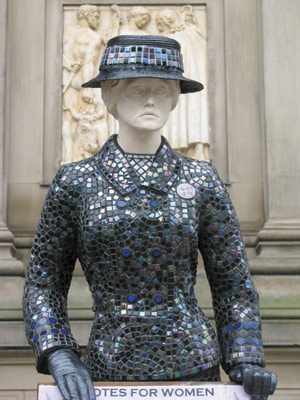 Mosaic
of Time
Mosaic
of Time
Carrie Reichardt is interviewed about her Mary Bamber statue by John Owen
What made you choose to do a piece about
Mary Bamber, a little less known activist in the suffrage movement?
The people that set up the project went to great lengths as to who they
wanted to honour, so my choice was one of her or the 1911 Transport Strike.
I chose Mary Bamber because the commission was so beautifully thought
out; it was her suffrage background, a history that is very rarely taught.
They were sexually assaulted by the police; violently beaten up. They
went to prison suffering terrible torture that’s not really talked
about. There were times when they were setting fires and burning down
buildings. They were the militants of militants.
This is the best thing, using history as a tool for the fight today against
the cuts. It was only a hundred years ago and women didn’t have
the vote. This fight is what it took to get that right, we weren’t
just given it. This is what will be required now if we don’t want
to be going back to the Victorian age.
Your collaboration was with sculptor
Nick Reynolds, how was the painstaking work achieved, with ceramic tiles
all over the piece, how was this done? What were the technical processes
involved?
Nick is a perfectionist obsessed with the body. We spent ages getting
the expression on the face right, like the Old Russian style influence
on socialists’ art. He worked with John Schoonraad the top prosthetics
guy in the country. He has done special effects on loads of films. We
wanted it to be as good as possible. So she looked proud with purpose,
and strong. So he created the base, and a collective of us worked together
to make the piece.
Liverpool Discovers project installed
your piece outside St George’s Hall, the scene of many a radical
orator and revolutionary agitator, are you pleased with the place she
was set, and do you think a kind of poetic justice has been achieved?
I knew she was going in speaker’s corner, and that’s why we
put a speaker in it, so you could speak through her. This was to honour
every known suffragette and to become a monument to a beautiful person.
We were recreating speaker’s corner again on the old speaker’s
corner.
Do you think the women’s movement
has anything to learn from the suffrage movement?
It’s not just women who need to learn. I believe people collectively
have to come together to resist the cuts, and a lot of direct action will
be needed. So we have a lot to learn and that’s why I was excited
about doing the piece. Around the bottom of the piece is an historical
timeline with a cue to take action today.
The Mary Bamber Statue has now been moved inside St George’s Hall.
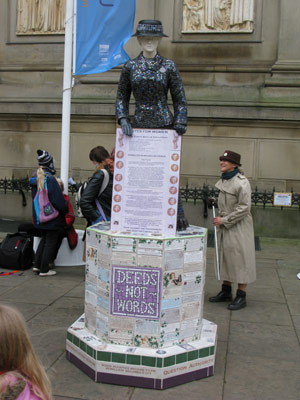 |
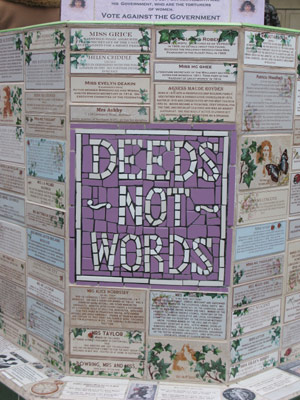 |
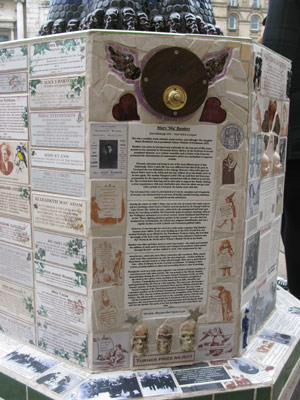 |
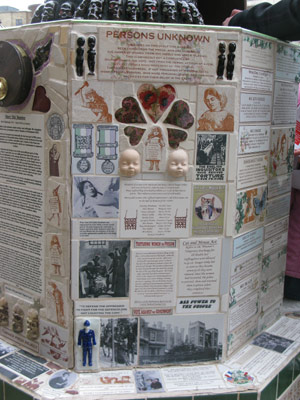 |